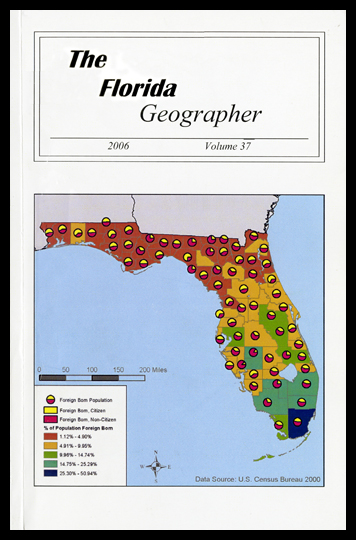Toward a Historical Geography of Florida: Assessing the Consequences of Massive Population Growth
Abstract
A historical geography of Florida? What a strange idea that must be to many contemporary central Floridians who half-heartedly assume that A.D. means "After Disney," the opening of Walt Disney World on the outskirts of Orlando in 1971-or for many historical geographers who think in terms of examining geographies of the
more distant past. In spite of the fact that Florida is home to St. Augustine, "The Nation's Oldest City" (if we pretend ancient Native American communities don't count), not until well after 1900 did the state begin to show signs of being transformed from a wetland wilderness into a series of sprawling cities, strip malls, and tourist attractions. And although wetland drainage and other landscape changes were well under way by the middle of the 20th century, Florida had only 2.7 million people in 1950-on its way to nearly 18 million in 2005-and counting (Figure 1; U.S. Census).

